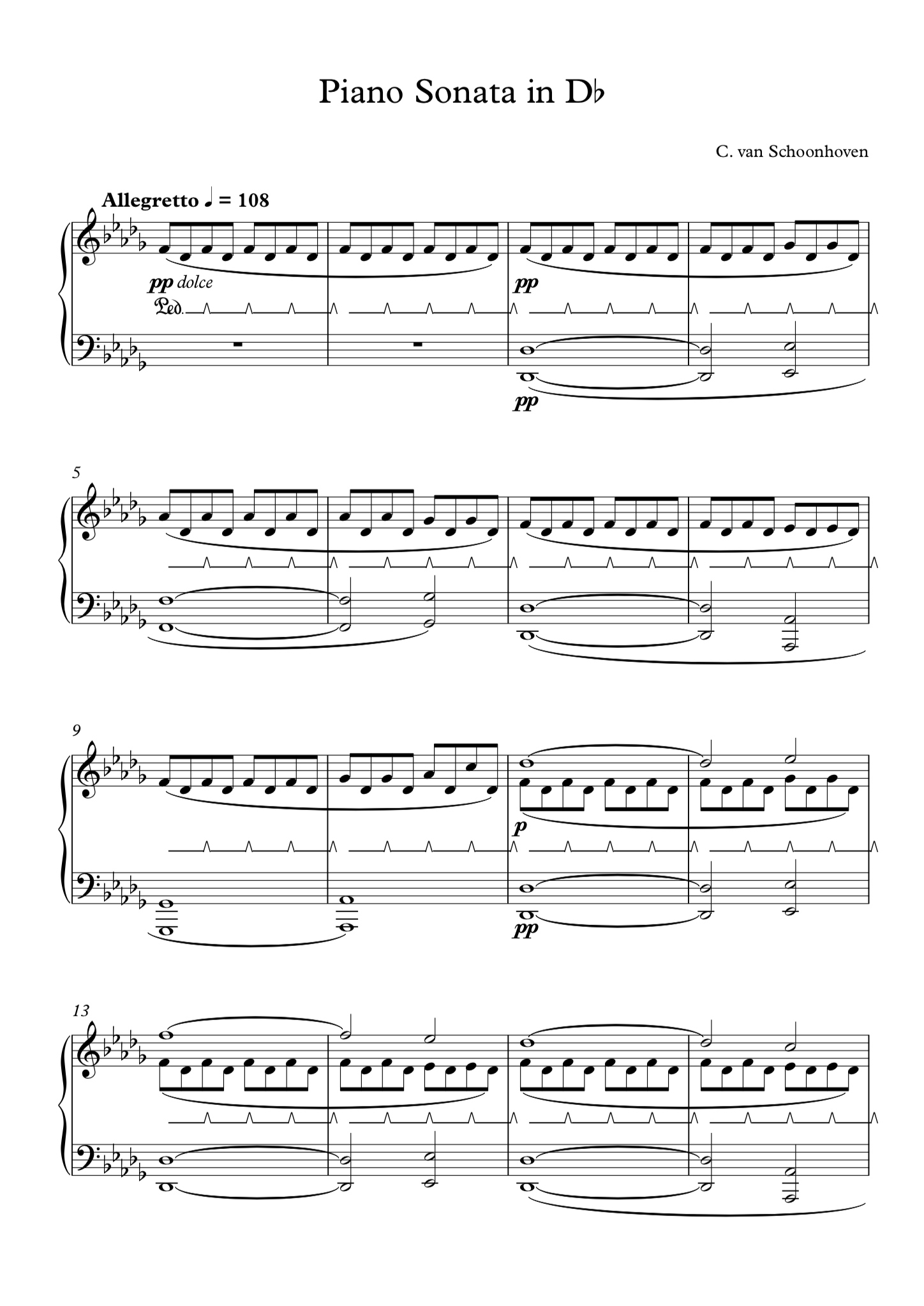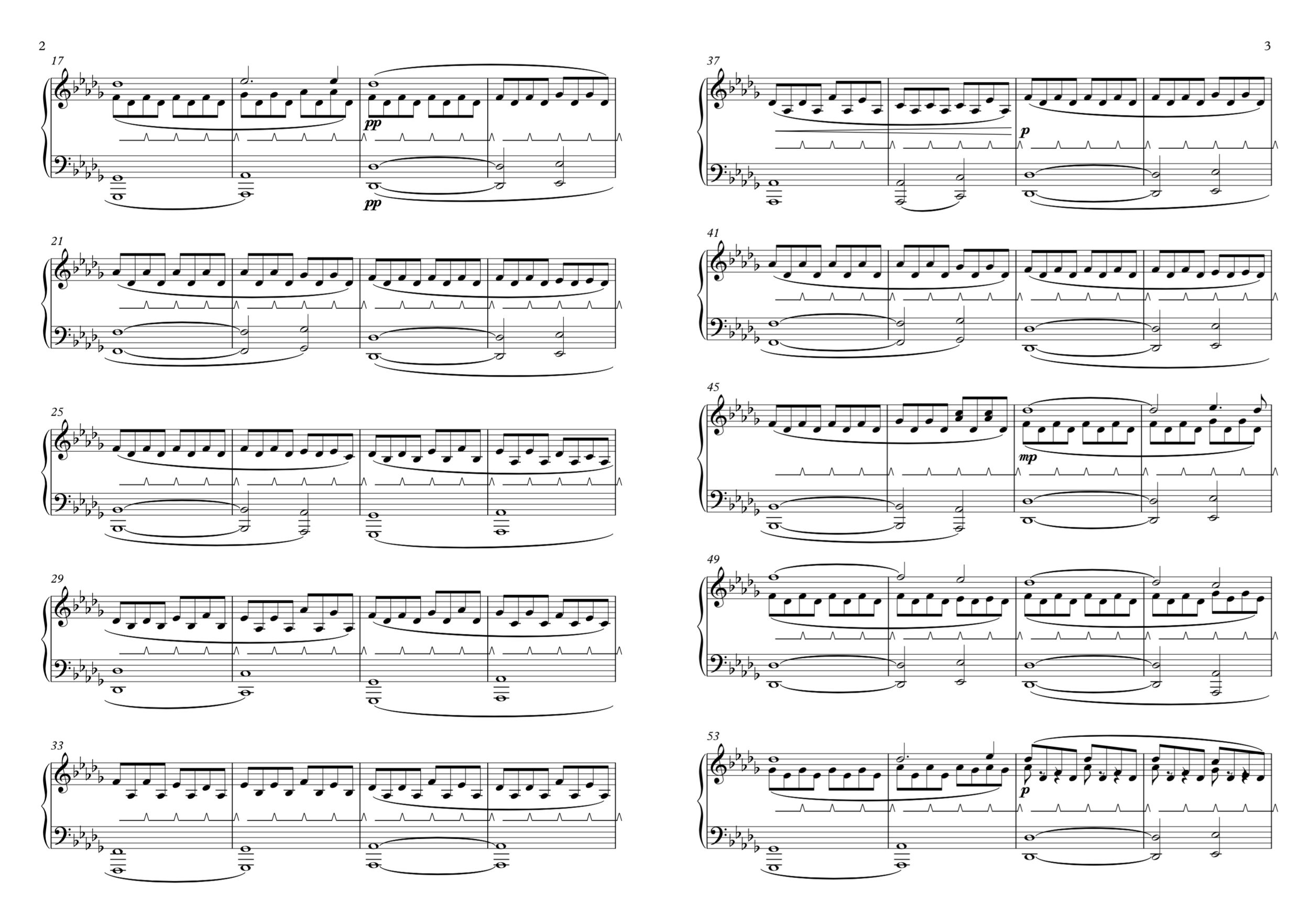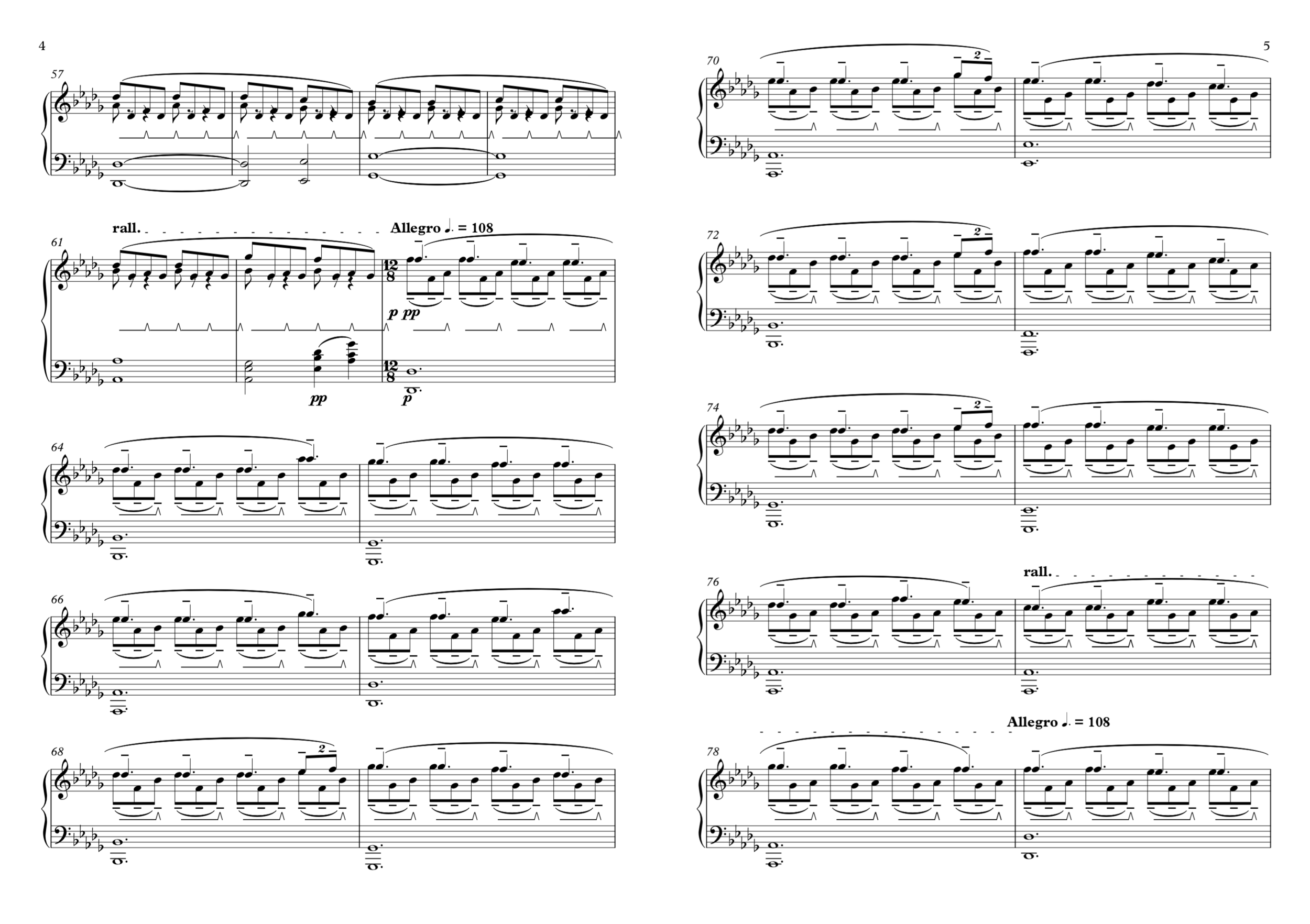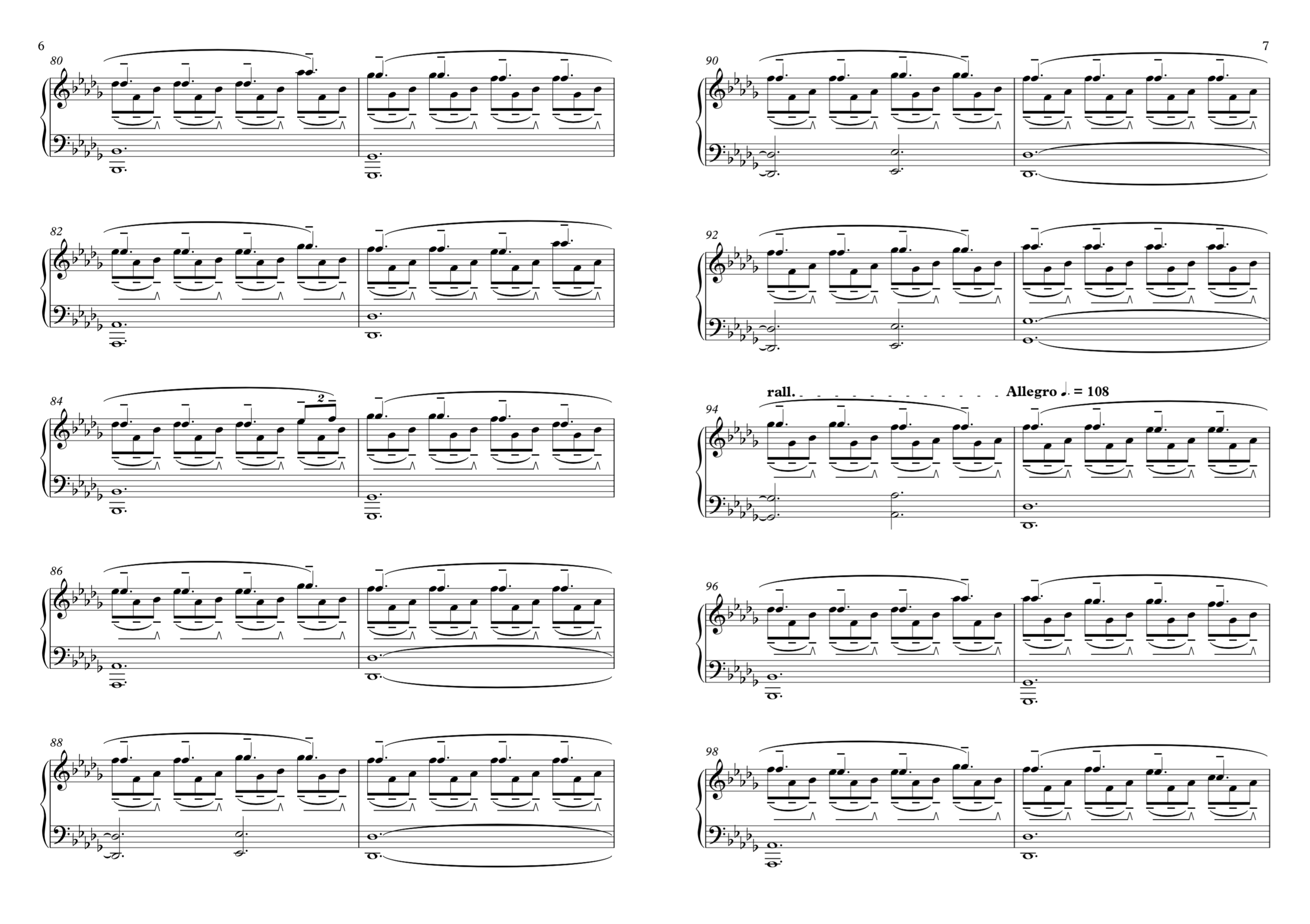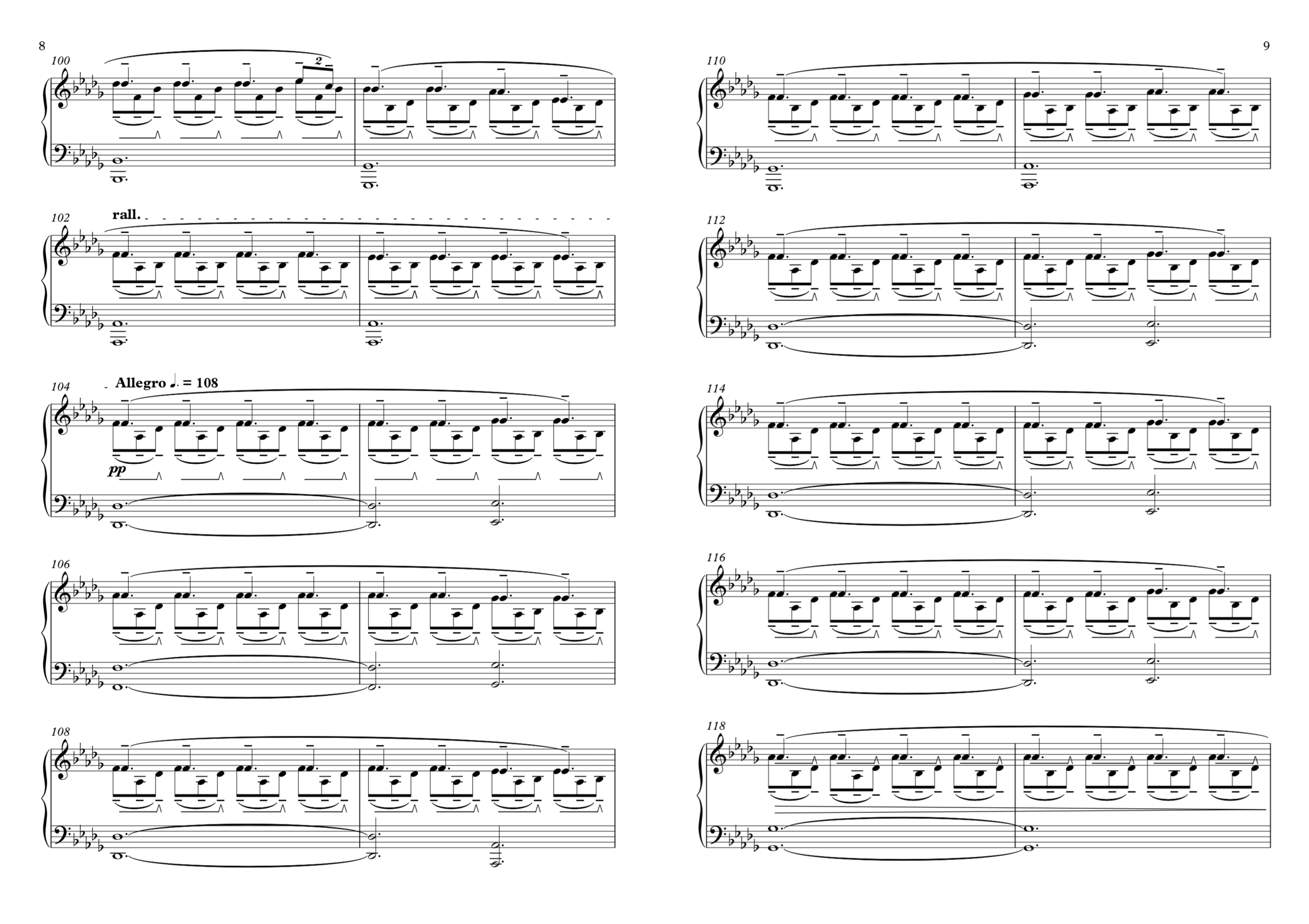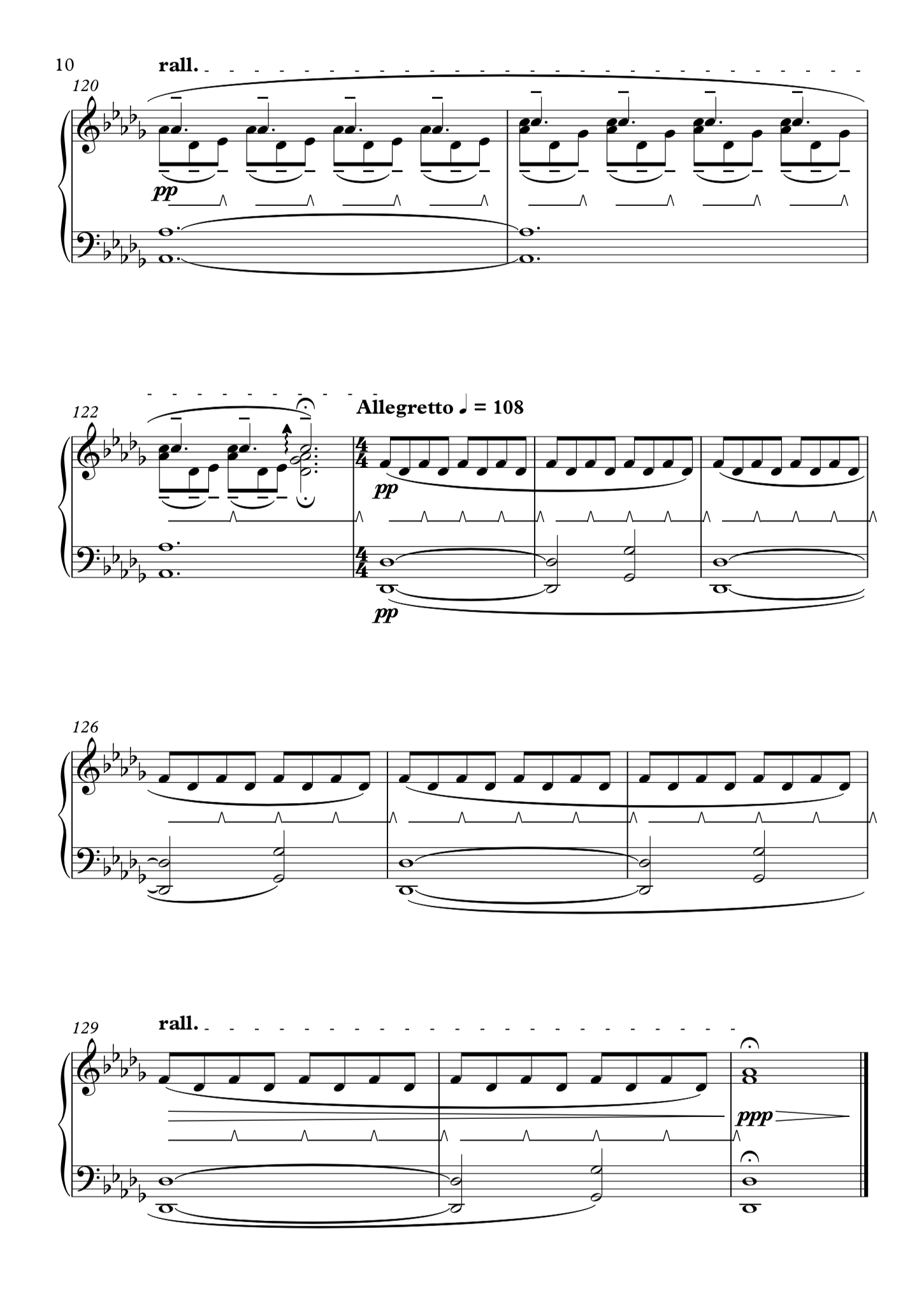Composing Spotlight: Piano Sonata in Db
Hello!
This month’s composing spotlight takes a quick look at the 2017 semi-improvisational piano music Piano Sonata in Db. You can find sheet music at the bottom of this post!
I wrote this because I wanted to write something a little more traditional and I had a nice tune stuck in my head after playing some piano. Of course, I have applied the term “sonata” rather loosely here. Strictly speaking a sonata is a form of music involving a theme, some development and then a restatement. This piece is a bit more free-flowing than that, as I prefer not to stick to the traditional guidelines. But when it came to naming, a loose “sonata” sounded nicer and more appropriate than a generic “fantasia”.
The music is exclusively for piano and begins in common time with a tempo of Allegretto and a (fairly obvious) key of Db-major. It is dolce, it is quiet and it is tender. Right from the start I wanted to create something light, atmospheric and emotional.
I begin by hovering between two notes and mashing the sustain pedal. This IS the theme. And it will continue for the rest of the piece. No mucking around, just straight to it. Then, it’s a simple and emotional piece, so some gentle octaves in the base constitute the melody. Although, it’s more about the harmonics being formed between the right hand quavers and the left hand breves.
Opening bars. This rhythm will continue for the rest of the piece.
There isn’t anything too special at the beginning of the piece. The music is literally just two notes played one after the other, with a bit of slow melodic action in the bass. But after the initial establishment of this I allow a bit more in the higher register and add another portion to the melody. The notes are pretty much the same, just two octaves higher. But at some points it diverges for a bit of super-exciting harmony.
The two-note theme varies itself as required alongside the bass to produce a melody of sorts, but always it will hop back and forth.
The first change comes in bar 55, where the first note of each quadrant of quavers is pushed up a sixth. The effect subtly changes the dynamic of the rhythm and melody from being a two-note phrase to four notes.
It also allows the music to begin slowing and transition into the 12/8 section, where the tempo is kept the same, but now everything is in triplets. This is the traditional ‘B’ section of the music, or in the case of a sonata, the development. The underlying rhythmic theme is retained, but the music instantly becomes more melodic and the previous note become supplementary to the main theme. This is the tender and emotional part.
Transition from 4/4 to 12/8, signalling the start of the ‘B’ (development) section.
Creativity and the free of my improvisational piano are rampant in this section, with rall’s at the end of each phrase and numerous duplets (two notes in the space of three). Everything is incredibly legato. The usually 4-bar phrasing and distinctive chord-per-bar harmony is prevalent here, but the focus is on the melody, not everything else. However, I did take opportunities to embellish a few chords.
The theme in here repeats a few times and augments itself into another chord sequence for a bit, but for the most part it is the same. Hence, it’s a pretty poor ‘development’ section, but it sounds nice, so who cares?
The music then makes its way back to where it started, reiterating the original theme, the ‘A’ section and fading out. It’s a small attempt to loop back and tie it all together, but it was never intended as proper sonata.
But who cares!! It’s a nice piece of music for the piano, great for a tenderful little serenade. So make good use of the sheet music below!
Thanks for reading and I hope you enjoyed this spotlight!




